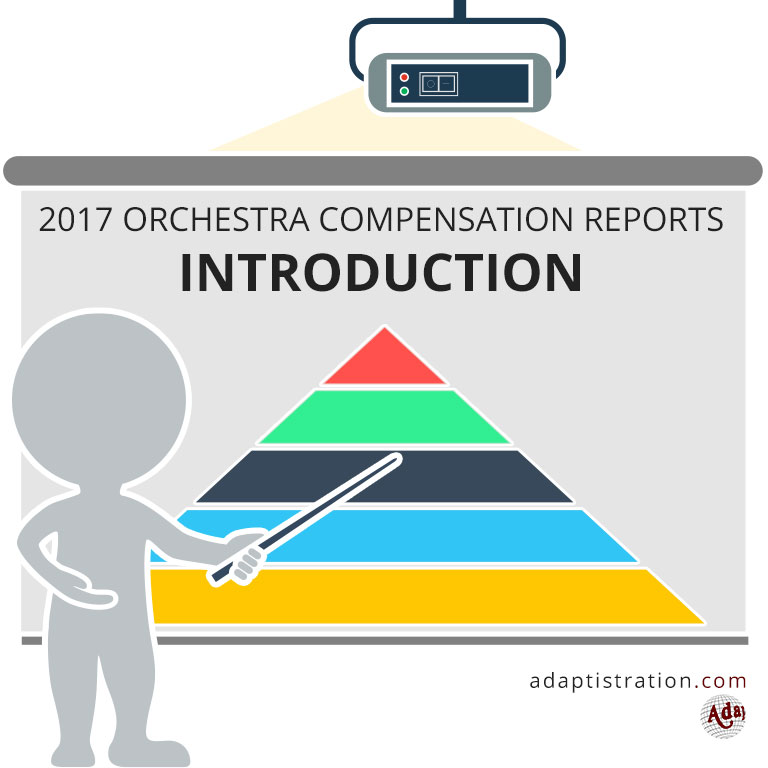It’s tough to imagine this year’s report could top the $5,110,538 Dallas Symphony Orchestra bombshell from 2016, and at the risk of burying the lead, that’s exactly that case. Having said that, there are more than enough fascinating developments to examine.
The Information
In order to provide information that is as accurate as possible, info from the 2014/15 season is gathered from the following sources:
- Music Director compensation figures were obtained from their respective orchestra’s IRS Form 990 for the 2014/15 concert season.
- Total Expenditures were also obtained from each respective orchestra’s IRS Form 990 for the 2014/15 concert season.
Adaptistration makes no claim to the accuracy of information from documents compiled or reported by external sources. If you have reason to believe any of the information is inaccurate or has changed since reported in any of the above sources and you can provide documentation to such effect, please feel free to use the following form to submit a notice.
What The Numbers Don’t Show
It is important to remember that the numbers shown do not always convey a complete compensation picture. For example, a music director may have had a large increase in salary because they were leaving a position and per terms of their contract they may have received a sizeable severance or deferred compensation package. As such, the cumulative compensation may artificially inflate annual earnings. Furthermore, these figures may not reflect bonuses or other incentive payments, therefore underreporting what conductors may actually earn.
Also missing from the figures are expense accounts, lodging expenses, and other perks; as such, the cumulative compensation for music directors may or may not be more than what is listed. Additionally, the documents used to gather figures do not indicate how much of the season an individual received a salary. As such, excessive adjustments in the percentage change from the previous season’s compensation may be artificially adjusted. Although the music director compensation figures include the combined amounts reported as what the IRS classifies as “compensation” and “contributions to employee benefit plans & deferred compensation,” each orchestra does not always report figures for the latter category.
How Terms Impact Compensation
Unlike executives, concertmasters, and musicians, music directors are sometimes employed as private contractors. In these cases, orchestras will list the music director among the five highest paid private contractors as opposed to sections devoted to employee compensation. In most of these instances, no information about benefits or deferred compensation is available.
Likewise, some music directors receive separate payments for duties associated with their position. For example, for several fiscal years the Seattle Symphony Orchestra paid former music director Gerard Schwarz via two separate private contractor listings: once for music director duties and the other for principal conducting duties. At the Chicago Symphony Orchestra, when Daniel Barenboim was with the organization, he was often paid separately for music director services and then again as conductor and soloist.
In instances such as these, those figures have been combined into a single figure in the table below. For details about each individual conductor’s compensation, please consult the orchestra’s respective IRS Form 990.
2014/15 Season Music Director Compensation

Top 10 Earners
- Chicago Symphony: $2,776,869
- San Francisco Symphony: $2,715,815
- Dallas Symphony: $2,657,139
- Los Angeles Philharmonic: $1,906,100
- New York Philharmonic: $1,672,450
- Cleveland Orchestra: $1,248,711
- Philadelphia Orchestra: $1,110,000
- Saint Louis Symphony: $1,042,644
- Baltimore Symphony: $1,015,937*
- Detroit Symphony: $828,591
* Fun Fact: this is the first time a music director at this orchestra earned more than $1mm.

The “Not Reporteds”
Although Spokane is a regular in the “Not Reported” group, Boston Symphony and Houston Symphony both have a long history of reporting music director compensation. What’s interesting in both groups is the 2014/15 season was the first full season for both of their respective music directors. Keep an eye out for updated information after each of these groups are contacted for clarification.
UPDATE 8/11/2017: the follow-up article is now available.
How A Multi-Million Dollar Compensation Package May Not Be Enough To Report
One particularly intriguing scenario among the “not reported” figures is the National Symphony Orchestra.
For context, the 2014/15 season was then music director Christoph Eschenbach’s final season. During his tenure with the orchestra, he was regularly among the Top 10 highest paid music directors in the country; in fact, the organization’s 2013/14 990 reported he was paid $2,274,151 as an independent contractor.
However, he wasn’t anywhere to be found on their 2014/15 filing.
According to the Kennedy Center’s Form 990, the lowest amount among their five highest paid independent contractors during the 2014/15 season was $2,709,973 (Restaurant Associates Inc. for catering services). Consequently, in order make it into that top-five threshold, Eschenbach would need a 20 percent increase over his previous season’s compensation.
As it turns out, it’s entirely possible he didn’t earn enough to be included in that group and since he isn’t compensated as an employee, the organization isn’t required to list it alongside those figures in Schedule J. Instead, they are only required to list the total number of independent contractors beyond the top five who earned $100,000 or more (for the record, the Kennedy Center reported “79” for that value).
It May Not Be $5mm, But A 48.5% Increase Isn’t Exactly Chump Change Either
It may not be $5,110,538, but Dallas Symphony music director Jaap van Zweden’s $2,657,139 is worth a second look in that it is still 48.5 percent more than what the organization stated as music director salary for the previous season:
- 2012/13: $1,505,052
- 2013/14: $1,788,997
(this is the amount from the $5,110,538 payout the DSO qualified as music director salary). - 2014/15: $2,657,139
As a result, that places him alongside what Riccardo Muti was paid by the Chicago Symphony ($2,776,869) and Michael Tilson Thomas was paid by the San Francisco Symphony ($2,715,815). Compared to what the Dallas Symphony has historically paid its music directors, this figure represents a substantial increase.


